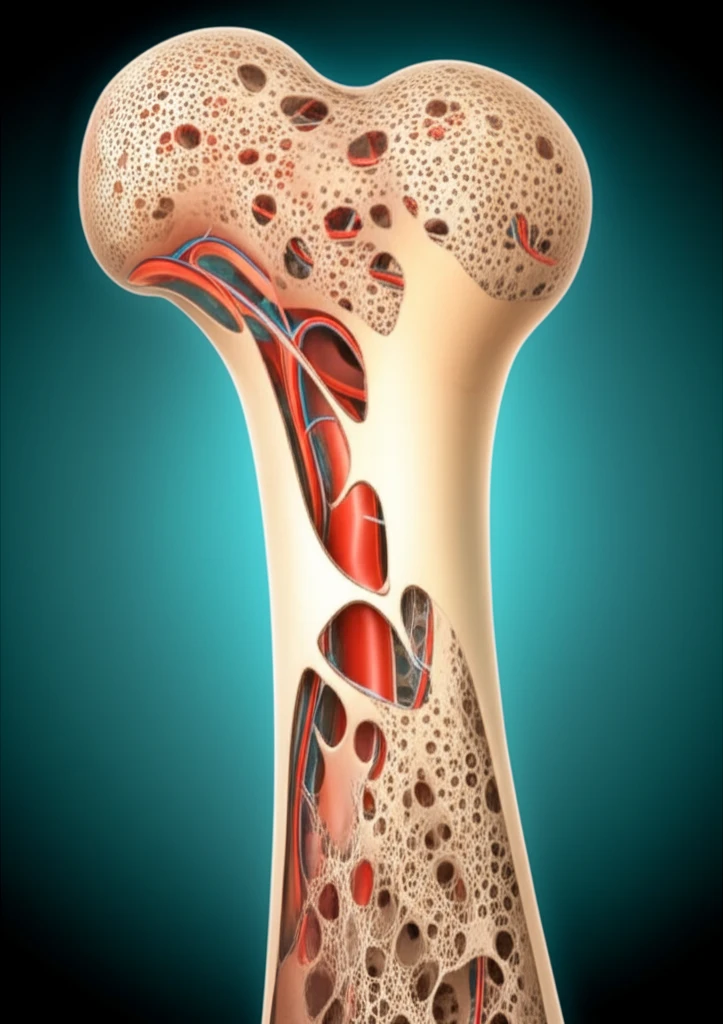
Estrogen-Deficient Bone Loss? A New Drug Offers Hope!
"Scientists Develop Bone-Seeking Drug to Combat Osteoporosis."
Osteoporosis is a widespread metabolic bone disease characterized by decreased bone mass and deterioration of bone tissue, leading to increased fracture risk. This condition becomes particularly prevalent with age, affecting millions worldwide. Estrogen deficiency is a primary culprit in the development of osteoporosis, triggering a cascade of events that disrupt bone remodeling.
Estrogen deficiency causes a reduction in the number of capillaries within bone marrow, resulting in oxygen deprivation. This leads to the activation of hypoxia-inducible factors (HIFs), which play a vital role in regulating cellular responses to low oxygen levels. Dysregulation of HIF signaling contributes to the imbalance between bone formation and bone resorption, accelerating bone loss.
Researchers have been exploring innovative therapeutic strategies to combat osteoporosis by targeting the underlying mechanisms of bone loss. One such avenue of research has focused on deferoxamine (DFO), a chelating agent with the ability to promote HIF activation and angiogenesis (blood vessel formation). While DFO has shown promise, its clinical use has been limited due to potential side effects and biotoxicity.
What Is SF-Deferoxamine and How Does It Combat Bone Loss?

Scientists have developed a modified version of deferoxamine, called SF-deferoxamine (SF-DFO), by conjugating DFO with iminodiacetic acid (IDA), a bone-seeking agent. This novel compound aims to enhance bone targeting while minimizing systemic side effects. The key benefits and mechanisms of SF-DFO can be summarized as:
- Reduced Biotoxicity: SF-DFO demonstrates a decreased inflammatory response in major organs like the liver and spleen, mitigating the toxicity associated with traditional DFO treatments.
- Equivalent Bone-Seeking Capability: SF-DFO retains the bone-targeting effectiveness of its predecessor, ensuring efficient delivery to affected areas.
- Enhanced Bone Formation: Studies indicate SF-DFO can lead to greater protective effects against trabecular bone loss compared to DFO alone.
- Comparable Bone Strength: The cortical parameters and overall bone strength performance between DFO and SF-DFO groups were found to be identical, confirming its efficacy.
Future Directions and Clinical Implications
The development of SF-deferoxamine represents a significant step forward in the treatment of osteoporosis and other bone-related disorders. Its unique bone-seeking properties, coupled with reduced biotoxicity, make it an attractive therapeutic candidate. Further research is needed to fully elucidate the long-term effects of SF-DFO and to evaluate its efficacy in human clinical trials. If proven successful, SF-DFO could offer a much-needed alternative for individuals at risk of or suffering from osteoporosis, improving their quality of life and reducing the burden of fractures.
